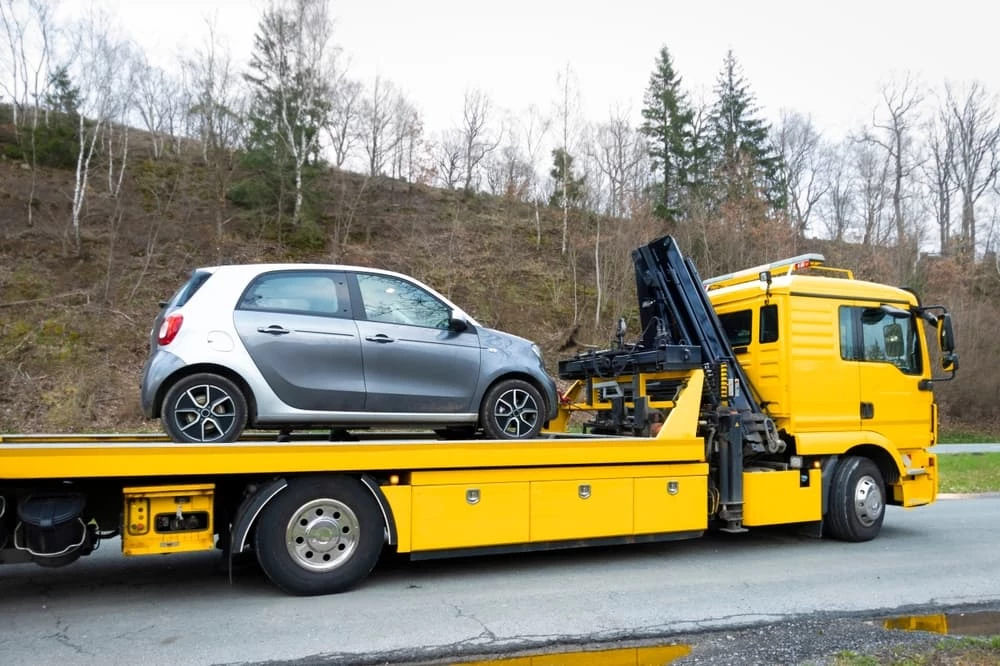Navigating the Hazards of Overloading: Safely Towing Within Vehicle Limits
When it comes to vehicle ownership, there are instances when owners would be tempted to exceed the towing capacity as vehicle owners would be tempted to exercise the plight of a delicious cheat or the excitement of high stakes gambling. But similar to these luxuries, Тowing beyond a vehicle’s limits can fill the ungo on a negative path.
In this essay, we discuss the risks and mechanical effects of towing over the capacity of the vehicles, and we also provide tips and precautions for the safety of towing practices.

Understanding Towing Capacity
Towing capacity is the central idea that must first be understood before discussing the risks. Every auto has a certain towing capacity, which is a crucial number determined by many factors like engine power, transmission strength, suspension, and braking system.
Despite what many people think, this capacity is not arbitrary; it is a precisely calculated threshold that aims to guarantee safe operation in the presence of towing gear.
The Dangers of Overloading
Towing a vehicle more than its actual towing capacity has its own unique risks not just for the driver but also for the other road users. The first and foremost is the possibility of a vehicle’s braking power being compromised.
Envision a circumstances where a rare customer crosses the busier section of a road thus unexpected an overloaded truck.
The braking system may be impaired with the additional load of the trailer and cargo, causing not only longer stopping distances but also more risks of collisions.
Imbalance and Oscillation
Another hazard of overloading is become unsteady and swerving. Not even the full towing capacity of the vehicle is safe against a wrong weight distribution or a badly secured load, which can make the trailer sway uncontrollably, thus threatening the vehicle’s control and safety.
Over the towing limit weight greatly i.e. piling up the risk of road accidents. Balanceing the load weight is very important in keeping the stability and reducing the sway.
Consecuencias mecánicas
Aside from the most crucial safety issues, over-towing is also detrimental to vehicle mechanical components. One particular area significantly affected is, of course, the transmission. Transmissions are built to endure the normal working conditions, however, the over-towing process makes them exceed their design limits.
The rise in heat and stress due to this can be the reasons to premature wear, fluid breakdown, and finally, the transmission collapse.
Have You Heard?
- Overloading maybe the cause of the high temperatures which can cause the wear on the transmission parts even if such is very low, thus can lead to high cost of repair or replacement.
- The increase in the load that is not just due to the transmission but has its toll on the vehicle’s suspension, brakes, and tires, which ultimately results in their limited lifespan and safety issues.
Precautionary Actions
Towing above the capacity and its risks mitigation involves prior actions mostly. The use of a weight-distributing hitch, which is in fact an upgrade, can be a way to better distribute the load across vehicle wheels and, consequently, add to your stability and control.
Moreover, equipping a transmission oil cooler with the vehicle will shield the transmission fluid temperatures to a great extent and maintain the overall health of the unitance during towing.
Safe Towing You Can Easily Achieve.
To begin with, the essential rule of safe towing practice is to never go beyond the vehicle’s towing capacity. This entails the necessity of accurately assessing the weight of the trailer loaded with cargo, which is referred to as the gross trailer weight, and subsequently matching it with the specifications that the manufacturer has provided.
Of course, it’s very important that to measure accurately you are using certified scales, and guesswork or approximation can lead to accidents that may happen on the road.
Main Aspects to Keep in Mind
- To avoid any chances of exceeding the limits, it is better to always refer to the specified towing capacity of your vehicle by the manufacturer.
- Should you want to have an experience that is both safe and secure in towing, the purchase of high-quality towing equipment such as hitches and brake controllers is imperative.
- Continuously check and take care of your towing vehicle and trailer to find out any problems in time before they advance into a risk to safety.
Weight distribution is a term that refers to how weight is distributed over an object. In the case of a scale, if the distribution is uniform, the readings on both sides of the scale will be the same. Weight distribution is crucial in the design of bridges, buildings, and other structures, as it directly affects their stability and durability.
Making sure that the load weight of a trailer is correct is one of the essential procedures to do in order to avoid possible risks and injuries during towing. To be on the safe side, ensure that you load it correctly by evenly distributing the weight. The excessive loading of the rear axle of the towing vehicle can occur if the weight is not evenly distributed. The improper distribution of load can result in the vehicle being difficult to corner, more swaying, and wheels and suspension components being damaged earlier than expected.
Drivers are able to increase the stability of their vehicles and minimize the risks of accidents through the proper positioning of the cargo as well as maintaining the load balance.

Determinants of Towing Capacity
A vehicle’s towing capacity is considered the most important factor along with its design and specifications, but there are external factors that can influence its towing capabilities. These factors include the engine power and torque output, the axle ratio, the cooling system capacity, and even the altitude and temperature conditions.
Drivers can make better decisions while towing under tough situations by comprehending the interplay among these variables.
This is a factual check on the matter:
- The performance of the engine and the cooling system may be affected by altitude and temperature conditions leading to the reduction of the vehicle’s towing capacity in these conditions such as high altitude or adverse weather conditions.
- Adding some vehicle particulars, e.g. cooling system or suspension involvement, can boost the capabilities of the towing vehicle, provided they are operated within a reasonable boundary of safety.
The Significance of Appropriate Care
Towing your vehicle safely is most certainly a matter of optimal vehicle conditions achieved by proper maintenance. The necessary services and the regular inspections your vehicle has must have the essential parts including brakes, suspension, and steering are in good condition.
Assuming maintenance is not necessary, you not only raise the chances of machine failures but also put the overall vehicle safety in danger. A step that ensures a successful towing trip is, before leaving, making a comprehensive pre-trip inspection to find problems that might occur, and dealing with them immediately.
Here are some tips for proper maintenance:
- Regularly check the tire pressure and tread depth because underinflated or worn tires can lead to vehicle stability and braking performance issues.
- Keeping an eye on fluid levels such as engine oil, transmission fluid, and coolant is crucial to avoid the overheating and possible component damage while towing.
Techniques for Better Safety in Towing
In addition to the need to conform to weight limits and to keep the vehicle intact, utilizing correct towing methods is the most basic safety measure for the road. This includes keeping a substantial distance between vehicle and trailer, realizing that it will take longer to stop, and altering the driving pattern to give allowance for the extra weight and the length of the trailer.
Furthermore, performing such maneuvers as backing up, turning, and navigating inclines in an arranged space can boost the self-assurance and the skill in towing.
Baby Safety Tips:
- When you are towing, you should increase the distance from the following vehicles to account for the longer stopping distances and the reduced visibility.
- Be careful while towing in the climate like rain, snow, and wind which can be restless in towing work.

Implementing Towing Safety Training for Drivers
Equal emphasis should be placed on making sure that people are aware of and instructed on the right towing techniques, which in turn would mean that the risks and accidents are minimized. Educational programs, informative materials, and community outreach projects can be very useful for drivers to acquire the necessary knowledge and skills to tow safely.
The incidence of accidents and injuries that are related to towing can be minimized by the collaborative efforts of the stakeholders through the development of a safety culture and accountability.
Ideas for Community Engagement:
- Provide training sessions or seminars to local drivers, discussing weight distribution, braking techniques, and maintenance tips.
- Involve the towing equipment manufacturers and automobile specialists in the development of learning materials, like short video presentations or pamphlets to ensure safety in towing practices.
Closing Statement
Inside the fast-changing towing industry, the first step in order to cope with the risks and revenues of exceeding tow capacity is to learn. By concentrating on safe practices, following vehicle limits, and using good conventional practices, drivers can benefit from the ease of towing without risking their health or others on the street.
Proficient towing is not merely an issue of capability; instead, it is a profound reflection of the commitment and precautions along with the respect for the road laws.
